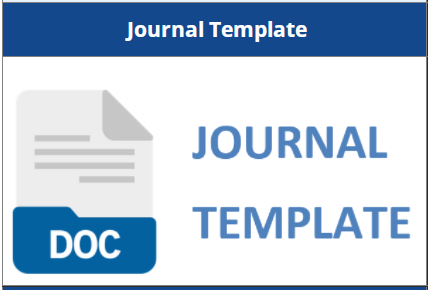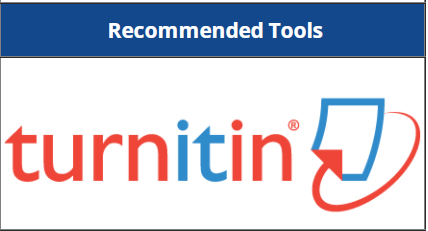PARTISIPASI MASYARAKAT SEBAGAI PERANGKAT HISTORIC URBAN LANDSCAPE DALAM PENGELOLAAN KAWASAN SUMBU FILOSOFI DI DAERAH ISTIMEWA YOGYAKARTA
Abstract
Historic Urban Landscape is a historic city management approach that is considered more comprehensive in balancing between social and economic development and cultural heritage conservation. UNESCO adopted the Recommendation on The Historic Urban Landscape on 10 November 2011 at the UNESCO General Assembly. As an approach that can be adopted by various countries, this approach recommends four main tools, namely civic engagement, knowledge and planning, regulatory system, and financial tools. This research aims to identify civic engagement tools in the management of the historic city area called Kawasan Sumbu Filosofi in the Special Region of Yogyakarta. This research uses a qualitative approach with a type of case study research and is descriptive in nature. Data collection techniques were carried out through interviews, observation, and literature studies. This research reveals that civic engagement in the management of the Kawasan Sumbu Filosofi in the voice area has been granted and guaranteed through various regulations. In terms of access, the government has provided a space for discussion, but the information the government provides still predominates in this forum. Concerning the aspect of control, community control over the surrounding environment has not been built. In general, the quality of community participation must continue to be encouraged to realize sustainable urban development and preservation.
Downloads
References
[2] City of Ballarat. (2013). Ballarat and UNESCO’s Historic Urban Landscape Approach. 1–23. http://historicurbanlandscape.com/themes/196/userfiles/ download/2014/5/16/pinx8xzux8vsvcr.pdf
[3] Creswell, J. W., & Poth, N. P. (2018). Qualitative Inquiry & Research Design: Choosing Among Five Approaches (Fourth). SAGE Publications Ltd. https://doi.org/10.13187/rjs.2017.1.30
[4] Cunha Ferreira, T., Rey-Pérez, J., Pereira Roders, A., Tarrafa Silva, A., Coimbra, I., & Breda Vazquez, I. (2023). The Historic Urban Landscape Approach and the Governance of World Heritage in Urban Contexts: Reflections from Three European Cities. Land, 12(5). https://doi.org/10.3390/land12051020
[5] Dinas Kebudayaan DIY. (2021). The Cosmological Axis of Yogyakarta and its Historic Landmarks: Management Plan. January.
[6] Foroughi, M., de Andrade, B., Roders, A. P., & Wang, T. (2023). Public Participation and Consensus-building in Urban Planning From The Lens of Heritage Planning: A Systematic Literature Review. Cities, 135 (January). https://doi.org/10.1016/j.cities.2023.104235
[7] Guest, G., Namey, E. & Mitchell, M. (2013). Collecting Qualitative Data: A Field Manual for Applied Research. SAGE Publications Ltd
[8] Oakley, P. (1995). People’s Participation in Development Projects: A Critical Review of Current Theory and Practice. In Oxford: INTRAC (pp. 1–40). INTRAC. http://www.participatorymethods.org/sites/participatorymethods.org/files/people%27s particiaption in development projects_Oakley.pdf
[9] Prihantoro, F. (2021). A Cultural Heritage Management Perspective: Kotabaru, Yogyakarta, between A Protected Cultural Site and A Commercial Area. Jurnal Humaniora, 33(2), 146. https://doi.org/10.22146/jh.67216
[10] Rustiadi, E., Saefulhakim, S., & Panuju, D. R. (2018). Perencanaan dan Pengembangan Wilayah (A. E. Pravitasari (ed.); 4th ed.). Yayasan Pustaka Obor Indonesia,.
[11] Satries, W. I. (2011). Mengukur tingkat partisipasi masyarakat Kota Bekasi Dalam penyusunan APBD melalui pelaksanaan Musrenbang 2010. Jurnal Kybernan, 2(2), 89–130.
[12] Silva, K. D. (2020). Introduction: Reimagining the conservation of Historic Urban Landscapes in the Asia-Pacific. In K. D. Silva (Ed.), The Routledge Handbook on Historic Urban Landscapes in the Asia-Pacific (pp. 1–26). Routledge.
[13] Sugiyono. (2011). Metode Penelitian Pendidikan :Pendekatan Kuantitatif, Kualitatif, dan R&D (12th ed.). Alfabeta.
[14] Tanudirjo, D. A. (2003). Warisan Budaya Untuk Semua: Arah Kebijakan Pengelolaan Warisan Budaya Indonesia di Masa Mendatang. Disampaikan dalam Kongres Kebudayaan V, Bukittinggi, 19-23, 2003
[15] Taylor, K. (2016). The Historic Urban Landscape paradigm and cities as cultural landscapes. Challenging orthodoxy in urban conservation. Landscape Research, 41(4), 471–480. https://doi.org/10.1080/01426397.2016.1156066
[16] UNESCO. (2011). Recommendation on the Historic Urban Landscape. Records of the General Conference 36th Session, General Co, 64. https://whc.unesco.org/uploads/activities/documents/activity-638-98.pdf
[17] UNESCO. (2016). The HUL Guidebook. In The HUL guide. http://historicurbanlandscape.com/themes/196/userfiles/download/2016/6/7/wirey5prpznidqx.pdf
[18] UNESCO. (2013). Nafas Baru Kota Bersejarah: Penjelasan tentang Pendekatan Lanskap Kota Bersejarah. https://unesdoc.unesco.org/ark:/48223/pf0000220957_ind
[19] UN-HABITAT. (2020). The New Urban Agenda, https://unhabitat.org/sites/default/files/2020/12/nua_handbook_14dec2020_2.pdf
[20] van der Hoeven, A. (2020). Valuing Urban Heritage Through Participatory Heritage Websites: Citizen Perceptions of Historic Urban Landscapes. Space and Culture, 23(2), 129–148. https://doi.org/10.1177/1206331218797038.












